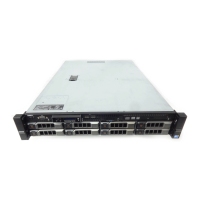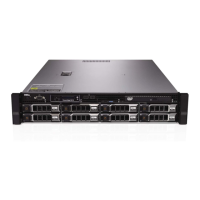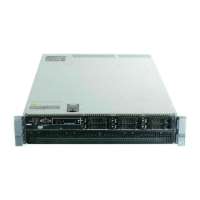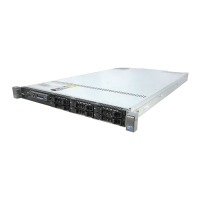Dell
PowerEdge R510 Technical Guide 43
Power Button Fixed ICH-10 In ACPI mode, OS has control of the power button. In non-ACPI
mode, SMI handler owns power button events.
Real-Time Clock Fixed ICH-10 The OS is able to configure the system to wake on the RTC
alarm.
Power Mgmt.
Timer
Fixed ICH-10 ICH-10 24-bit power management timer is used.
Power Mgmt.
Event (PME)
Generic ICH-10 Each host bus’ PME# signal is routed to a separate general-
purpose event pin in the chipset. When a device signals PME#,
the system wakes (if necessary), the OS detects the event, and a
Dell defined ASL routine handles the event. Wake-on-LAN is one
example of a PME.
USB wake Generic N/A This feature is not supported on this system since the S1 state is
not supported.
OS DBS N/A Processor MSRs This feature does P state transition under Windows
C State Support Fixed and
Generic
Processor MSR and
ICH-10 registers
This feature allows multiple C state support for Processor. This
feature works under Windows and any ACPI OS that understand
C states.
Power Profile
support
N/A Processor/MCH
and ICH-10 chipset
registers.
11G Servers are the most energy-smart servers that Dell ships.
In addition to P, C, and T states, BIOS exposes the Power
Profiles to the OS. Each Power Profile has specific settings and
fine tunes the processor (MCH, IOH and South Bridge).
Here are the current Power Profiles that 11G BIOS exposes in BIOS setup. The Active Power Controller mode
is the default mode.
Table 15. Supported Power Profiles
Performance
DBPM Disabled ( BIOS sets P-State to MAX)
Memory frequency = Maximum Performance
Fan algorithm = Performance
Enable OS DBPM Control (BIOS exposes all possible P states to OS)
Memory frequency = Maximum Performance
Fan algorithm = Power
Controller
Enable Dell System DBPM (BIOS will not make all P states available to OS)
Memory frequency = Maximum Performance
Fan algorithm = Power

